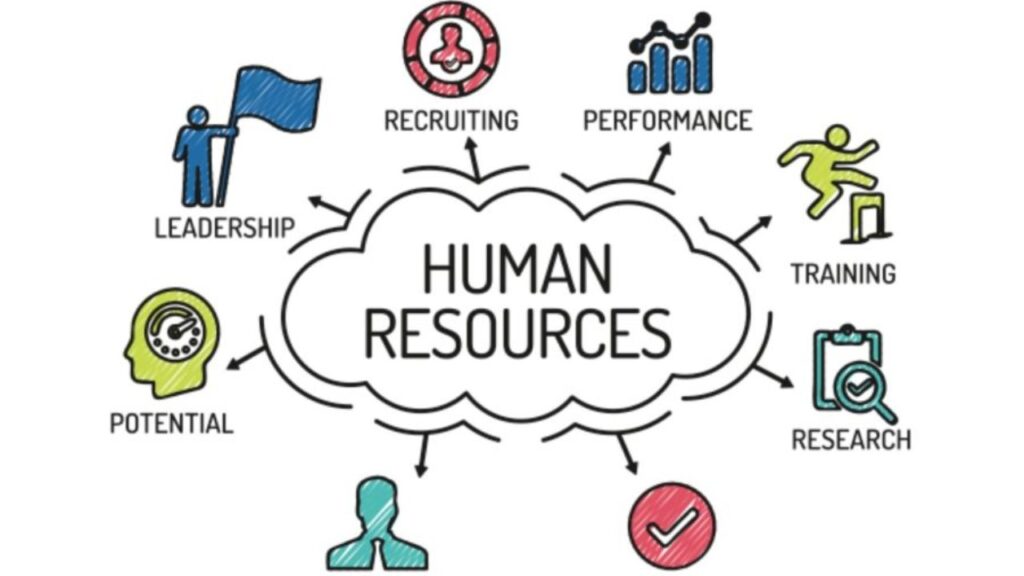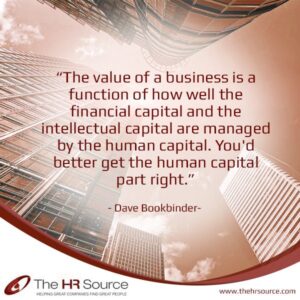
HR has always been an integral part of any sound, healthy organization. HR professionals heavily contribute to a company’s culture: If your HR team is not up to speed with what is relevant today, or worse, contributes to any toxicity or uncertainty in your organization, your employees will be discouraged, they will lack motivation and will likely be less inclined to consult HR for help (whether it be for career-related issues or personal ones).
Seasoned HR professionals are often called upon to be unofficial psychologists, teachers, lawyers, event planners and peacekeepers. We are the voice of an organization’s people; and yet, we must balance the company’s policies, strategies, and business goals with the workforce’s needs. We must be sensitive, highly attuned and informed regarding all things happening in relevant legislation and in the workforces we manage.
Managing employer-employee relations has historically been challenging; however, Covid-19 has made our function even more challenging. Keeping employees motivated and on track during the pandemic should be our number one focus. Other key functions of HR are, of course, recruiting the right talent for the organization, keeping the workplace safe (particularly now!), training and developing a company’s people, assessing risks (and knowing when to escalate those risks to employment lawyers; rather than taking on a complex legal issue themselves); as well as ensuring compliance with an organization’s policies.
If you are an experienced HR professional, you will know that there’s a huge difference between a healthy human resources department or team of professionals: i.e., a human resources team that contributes to the growth of an organization, who inspires the company’s people, mentors, encourages, builds, grows the company; and an ineffective, inefficient HR department that exists somewhere in a distant corner of the office, hiding behind a computer and only ‘appearing’ when there’s a problem. This is not the time for the latter.
Nor is this the time to pile on more work to your company’s Financial Controller, VP of Administration, Office Manager, CFO or COO. Aside from the fact that these senior managers are overwhelmed with what they already have on their hefty plates, and even though some of them might hold a CHRL or a CHRP designation, this does not automatically make them HR professionals. For example, at a recent Executive meeting at which we were in attendance, we were more than surprised to hear the Head of Corporate HR refer to Canada’s E.I. (Employment Insurance) benefits as “U.I” (Unemployment Insurance). FYI: E.I. has not been called U.I. since 1996:
-
- “In 1996, the name of the program was also changed to Employment Insurance (EI). This was intended to reflect the program’s primary objective of promoting employment in the modern economy and labour force, and to move away from the image of supporting unemployment. – Sep 22, 2009”
Employment Insurance in Canada: History, Structure and Issues | Mapleleafweb.com
This same senior “HR” executive (who, incidentally, has a CHRP designation) also stated that the maximum percentage of wages payable under the program was 67%. The real number is 55%, actually:
-
- “For most people, the basic rate for calculating EI benefits is 55% of your average insurable weekly earnings, up to a maximum amount. As of January 1, 2020, the maximum yearly insurable earnings amount is $54,200. This means that you can receive a maximum amount of $573 per week. — Sep 26, 2020”
EI Regular Benefits – How much could you receive – Canada.ca
- COVID-19 has made HR an essential piece of the company:
Managing staff, staying on top of current employment legislation, Covid-19 rules, and regulations, while promoting a positive employee experience and culture all take time and require specific skills. HR is an area of expertise many business owners lack.

We cannot stress enough the importance of having an experienced team of HR professionals who will be able to greatly assist in navigating the added challenges we face.
- Helping the organization adapt:
After the initial COVID-19 lockdowns were announced, one of the first questions most business leaders asked was, “How are we going to keep our employees and stay in business?” Many looked to their HR department for solutions, and rightfully so. One of the primary functions of HR is helping businesses find the balance between supporting their workforce and maintaining a profitable business amidst a shifting landscape.
At the start of the lockdowns, HR professionals had to think quickly and creatively; and implement solutions fast. While government subsidy programs such as the CEWS offered some relief, these programs did not do enough for a large majority of small to mid-sized businesses, faced with the difficult decision of laying off or terminating their people. Impactful HR professionals and practitioners of Positive Organizational Behaviour; those who understand the value of fostering positive employee-employer relations can find alternatives to layoffs and put programs into action that help support your employees. If you think your options are limited in the face of an economic downturn, think again. Here is a list of 50 alternatives to layoffs.
Experts predict (and we can see for ourselves) that remote work will be a permanent feature for an ever-increasing number of organizations. HR continues to play an essential role in helping businesses transition into the new realities of remote work. HR professionals had to work closely with their I.T. departments to ensure that newly implemented work-from-home infrastructures aligned with the individual needs of the business units within their organizations. This collaboration between I.T. and HR helped traditional brick-and-mortar businesses transition more seamlessly into a remote work framework. The business continuity was able to be preserved thanks to these HR and IT teams ensuring their employees had the right tools and support necessary to perform their jobs, remotely. However, while many employees seem to prefer remote work, the transition to working from home has not been ideal for everyone.
For example, HR professionals have had to tackle sensitive issues relating to accommodation and compliance; perhaps even accommodating employees who lack personal resources (i.e., homelessness) and those who live in households with domestic abuse. These challenges have added another layer of complexity to HR’s role in balancing the needs of the business with the welfare of its employees. Every employee’s situation is unique and must be handled with the utmost care and professionalism to preserve the dignity of the employee; as well as to avoid potential legal ramifications.
- Legal compliance and protection:
This pandemic has created a legal minefield for many employers who were forced to keep up with, and quickly make sense of, vague, ever-evolving legislation. Many of these legislative changes promise hefty fines and jail time if not adhered to; and add further complexity to the relationship between employers and employees and their respective obligations.
Having a thorough understanding of employment law is a requirement for any qualified HR professional, hence why many employers, and their employees, immediately look to HR first, for answers regarding what these changes mean to them. When COVID-19 was first declared a pandemic, within a period of a few weeks, and in addition to managing existing responsibilities and deliverables, HR professionals had to become experts in:
- The classification between “essential” and “nonessential” businesses, what activities these businesses could conduct, and the way they could be conducted;
- The legal intricacies of implementing various cost-cutting measures during a pandemic, i.e., temporary layoffs, temporary salary reductions;
- Evolving health and safety protocols and consequences of employer/employee non-compliance;
- Managing work refusals during a pandemic;
- Managing employee confidentiality after the risk of COVID-19 exposure;
- New sick leave options and changing leave policies; and
- Various government subsidies and other assistance programs, i.e., CEWS, EI, CERB/CRB, CRCB, CRSB
It was a time rife with uncertainty. Effective and forward-thinking Leaders and Management Executives everywhere had never been more thankful to have trusted HR partners who could provide them with accurate, up-to-date information. But here we are one year later, and that uncertainty persists. As COVID-19 continues to evolve, so too do the laws, regulations, and guidelines surrounding it.
Many of the legislative changes implemented by local governments have been introduced as temporary measures to help minimize the impacts of the COVID-19 pandemic on employers and employees. The temporary nature of these changes suggests that all the updates which HR professionals have been hastily implementing into HR documents may need to be reverted (or at least closely reviewed) in a few months’ time, as they may no longer be valid in a post-COVID world.

When things are constantly changing, consistency in messaging is essential. In top-performing organizations, HR typically assumes the role of responding to employment-related questions from all employees of an organization, past and present. This can include current employees who have questions regarding the status of a temporary salary reduction, temporarily laid-off employees who are wondering about their return-to- work date or terminated employees who have questions about employment insurance benefits. Having clearly defined communication channels helps to ensure clarity in communication during an already confusing time.
- Employee engagement and productivity:
Employee engagement is defined as the mental and emotional connection employees feel toward their workplaces; or “the extent to which employees feel passionate about their jobs, are committed to the organization, and put discretionary effort into their work.” After reading the definition, it is easy to understand why employee engagement is a top priority for HR professionals everywhere. Employee engagement is, essentially, what drives employee productivity, and in turn, company revenue.
Fostering a high level of employee engagement and commitment has always required a certain level of skill and expertise to manage effectively. Pre-COVID-19, employee engagement was largely cultivated through activities that built camaraderie and a sense of connection to the team and the organization at large. This sense of connection was typically accomplished through activities and events that helped establish shared purpose, vision, and goals, such as: corporate team building events and holiday parties, employee recognition ceremonies, and even pay raises and promotions.
As HR professionals, we look to foster affective commitment – not continuous commitment, in our employees. Affective Commitment occurs when employees feel a strong emotional attachment to the organization, and to the work that they do. They develop a strong ‘affection’ for the company. They will most likely identify with the organization’s goals and values, and they will genuinely want to be there. If employees enjoy their work, they are likely to feel good, and be satisfied with the job. In turn, this increased job satisfaction is likely to add to their feeling of affective commitment and this, in turn, increases engagement and productivity which represents increased bottom-line revenue for the company.
Continuous Commitment, on the other hand, occurs when an employee weighs the pros and cons of leaving the organization and decides to stay. They may feel that they need to stay at the company, because the perceived loss that they’d experience by leaving the organization is greater than the benefit they believe they might gain in a new position at another company. Basically, it is fear and money that keeps these employees ‘stuck’ in their current role/company. Unfortunately, this also means, they are not engaged, they are there ‘putting in time’, they are not at all motivated, their productivity decreases consistently over time and this, in turn, affects bottom-line revenue. The negativity and toxicity that often occurs because of having a lot of Continuous Commitment employees adversely affects all other employees in the organization. Have you experienced an increase in resignations, ‘sick leave’ requests, and other ‘general leave’ requests? This should be a huge red flag!
COVID-19 has forced employers and their HR teams to find creative ways to continue traditionally in-person employee-oriented events in an online virtual format (assuming they have not been canceled altogether due to budgetary concerns or health and safety restrictions). HR professionals need to continue to lead with innovation and agility in finding alternative means of keeping employees connected and affectively committed to the organization despite being apart.
Some employers and their HR teams seem to have been able to find ways to adapt. A recent survey by Quantum Workplace showed that while employee engagement had dipped after COVID-19 gained its pandemic status, it has since picked up and exceeded pre-COVID rates by 11%. Many forward-thinking HR professionals see that there now exists an opportunity to implement some of the pro-engagement business practices that were previously unfavoured by more traditional, old-school business leaders, such as remote work and flexible work arrangements. The massive shift to flexible remote work has been a likely contributor to the 11% boost in employee engagement because it has enabled employees to achieve greater work-life balance and forced employers to upgrade and replace aging technological infrastructure and improve their communication practices overall.
- Future-proofing the organization:
 The COVID-19 pandemic has highlighted the faults in traditional, inflexible business planning. Businesses can no longer afford to cling to the same plan quarter after quarter, year after year, under the assumption that environmental and market conditions will remain static. The pandemic has shown us just how fragile the concept of stability truly is, as everything we had ever known to be an essential part of normal everyday life was flipped upside down at a moment’s notice. Thus, it would be irresponsible for businesses to move forward with their pre-COVID-19 strategies without approaching business planning in a way that is more reflective of past and current experiences.
The COVID-19 pandemic has highlighted the faults in traditional, inflexible business planning. Businesses can no longer afford to cling to the same plan quarter after quarter, year after year, under the assumption that environmental and market conditions will remain static. The pandemic has shown us just how fragile the concept of stability truly is, as everything we had ever known to be an essential part of normal everyday life was flipped upside down at a moment’s notice. Thus, it would be irresponsible for businesses to move forward with their pre-COVID-19 strategies without approaching business planning in a way that is more reflective of past and current experiences.
Moving into the post-pandemic world, businesses need to develop plans that offer more flexibility and are less dependent on external conditions beyond one’s control. Public health and government guidelines are rapidly changing in response to new information and businesses need a plan that can keep up. Instead of traditional, fixed planning, businesses should consider making the shift towards agile business planning which focuses on outcomes rather than processes; and HR is playing a big part in helping businesses make that move. In fact, an integral part.
Agile business plans should be grounded by outcomes instead of processes and flexible enough to respond to future unknown variables. No one can predict the future, but by focusing on key strengths within the organization, businesses can build more resilient teams that can adapt to unpredictable circumstances. HR’s fundamental role is to develop and execute plans in alignment with the organization’s strategic objectives. HR professionals are outcome-focused by design. We also have the unique advantage of constantly looking at the organization as a whole and understanding the strengths, weaknesses, opportunities, and threats (SWOT) existent within each team as they relate to that whole. This enables HR to greatly contribute to the agile business planning process in a strategically valuable way.
“People and their behaviors are what deliver results to your organization. Not systems, not processes, not computers, not machines.” – Mark Hortsman, Co-Founder, Manager Tools
Co-authored by:
Effie Tsergas, Founding Principal, TSERGAS Human Capital
Cierra James-Hahn, Human Resources Business Partner, TSERGAS Human Capital

Effie Tsergas
Founding Principal, Managing HR Director
Effie Tsergas has been a champion of positive organizational behavior for over twenty-five years. She is theFounding Principal and HR Management Consultant of Tsergas Human Capital.

Cierra James-Hahn
Senior HR Management Consultant
Cierra is an experienced human resources professional with a comprehensive background in recruitment and onboarding, contract writing, compensation and benefits, health and safety, and policy development.